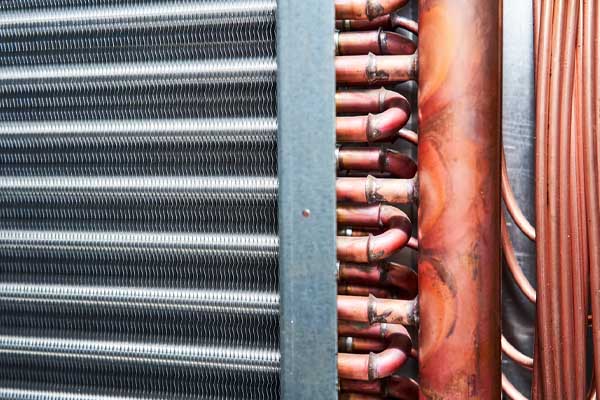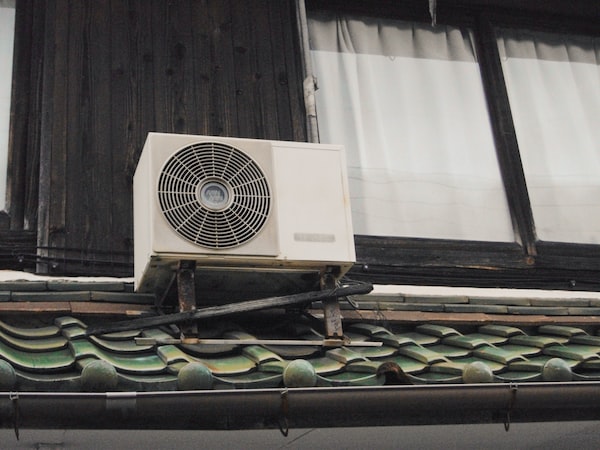Are you curious about the different components that make up an HVAC cooling system? Understanding how these components work together can help you better maintain and troubleshoot your system. In this article, we will explore the basic components of an HVAC cooling system, including the compressor, evaporator, and condenser. Keep reading to learn more and become familiar with the key elements that keep your home cool and comfortable.
Evaporator Coil
An evaporator coil is an important component of a cooling system, as it helps to absorb heat from the air and then transfer it outside. So, how does an evaporator coil work? The coil works by using refrigerant gas to cool the air that passes through its coils. This process begins when warm air enters the system and is routed through the coil, which has been cooled by the refrigerant gas inside. As this happens, the heat from the incoming air is absorbed into the refrigerant gas in order to condense it into liquid form. The cooled air is then sent back into the room. With each cycle lasting between 15-20 minutes, evaporator coils are incredibly efficient at transferring heat energy away from your home while keeping temperatures low throughout all seasons.
The evaporator coil is also responsible for dehumidifying the air. As the air passes through the coil, the refrigerant absorbs the moisture from the air. This condensation process removes the moisture from the air, thus making it more comfortable for the occupants of the room. Without the evaporator coil, the AC unit would not be able to effectively cool and dehumidify the air, making it uncomfortable to be in the room. As a result, it is important to ensure that the evaporator coil is functioning properly and is regularly maintained in order to keep the AC unit running at its optimal performance.

Condenser Coil
The condenser coil is another vital component of an HVAC cooling system. The condenser coil is a heat exchanger that transfers the heat from the air inside the AC unit to the outside environment. The condenser coil is made of a series of tubes that are coiled together with thin metal fins installed between them. The tubes are filled with an HVAC refrigerant that circulates through the system.
As the refrigerant flows through the coil, the heat from the indoor air is absorbed and carried outdoors to be dispersed into the air. The fins increase the surface area of the coil and improve the transfer of heat. This cycle repeats over and over again, with the refrigerant absorbing heat from the indoor air and releasing it outside through the condenser coil. It is important to keep the condenser coil clean and free from debris to ensure optimal performance.
Compressor

The compressor is the heart of an HVAC cooling system, responsible for pumping refrigerant throughout the system. It is located outside the home or building and is typically housed in a metal cabinet. The compressor receives low-pressure refrigerant gas from the indoor evaporator and compresses it into a high-pressure gas, which is then sent to the outdoor condenser.
The compressor has both intake and exhaust valves, which are necessary for the compression process. The intake valve draws in low-pressure refrigerant gas, which is then compressed by the piston inside the compressor. The exhaust valve releases the high-pressure gas that has been compressed and prepares it for transport to the condenser.
There are different types of compressors used in HVAC systems, including reciprocating, rotary, and centrifugal compressors. Reciprocating compressors use pistons to compress the refrigerant and are commonly found in smaller systems. Rotary compressors, on the other hand, use a rotating device to compress the refrigerant and are often seen in larger systems. Centrifugal compressors use high-speed impellers to draw in and compress the refrigerant and are typically used in industrial settings.
Expansion Valve
An expansion valve is one of the most critical components of an HVAC cooling system. This valve is responsible for regulating the flow of refrigerant into the evaporator coils of the air conditioning unit. The expansion valve is designed to control the amount of refrigerant that flows into the evaporator by monitoring the pressure and temperature of the system. It works by creating a pressure drop across a small orifice, which causes the refrigerant to expand rapidly and cool down before entering the evaporator coils.
The primary purpose of the expansion valve is to lower the pressure and temperature of the refrigerant coming from the compressor to create a cooling effect inside the air conditioning system. The valve is also crucial for the overall efficiency of an HVAC system, as a well-functioning expansion valve ensures proper cooling and prevents energy wastage.
Overall, the components of an AC unit are essential to ensure that the unit is running efficiently and effectively. They serve a variety of purposes, from cooling the air to controlling humidity levels, and must be maintained and serviced regularly to ensure optimal performance.

